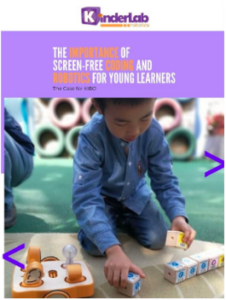The Toy Book: Breaking Down the ABCs of Toys
In this article, Dr. Marina Bers, our co-founder and Chief Scientist was interviewed to discuss the importance of STEM toys. The article goes on to read in part:
No doubt, STEM-labeling is a magnet for today’s consumers. But calling a toy “STEM” is no more a guarantee that it’s good for children than plopping the ABCs into a cereal bowl. The label may get a parent to pluck it off a shelf, but it won’t get a kid to love it. The integration of research and innovation, fun, and function is what drives success. STEM hype is often just that: Hype. A good toy — STEM or not — has these ABCs built into its DNA.
A: AGE-APPROPRIATE SKILLS
Bers’ research with KIBO shows that kids as young as 4 years old are capable of successfully building and programming robots. As kids get older, they can master increasingly complex concepts and skills, including repeat loops, sensors, and conditional statements. Manage your age-appropriate expectations, as well as those of your consumers.
B: BALANCE BETWEEN TECH AND NON-TECH PLAY
Basic blocks can teach coding just as effectively as a Raspberry Pi. STEM toys don’t need to have every element of science, technology, engineering, and math. Sometimes, one well-executed skill set is sufficient.
C: CRITICAL THINKING, CREATIVITY, AND COLLABORATION
Kids spend enough time alone in a room staring at a screen. More toys that invite community and creativity are definitely needed in the marketplace.
See the full article here on Page 54.



















